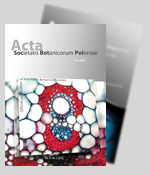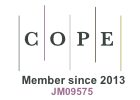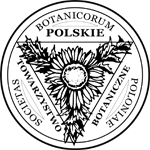Abstract
The feature of the orange colour of young seedlings, which appeared in inbred generation S2 of a short straw form of winter rye cultivated in Jeleniec is described. Genetic analysis revealed that this feature is determined by one recessive gene, marked with the symbol cl2 (chlorophyll lethal), because the plants with a double dose of this gene (recessive homozygotes) die four weeks after germination. In contrast to typical chloroplasts in normal plants (green), mesophyll cells of mutants (of orange colour) contain plastids devoid of grana thylakoids. The lamellar system of these plastids is composed only of more or less parallel single thylakoids. Short thylakoids often demonstrate a "staircase" arrangement forming in this way long thylakoids. Moreover, such plastids are characterized by the presence of 1-4 clusters of osmophilic globules. Starch grains were lacking in plastids of mutated plants.
Keywords
rye; chlorophyll mutant; inheritance; plastid structure







